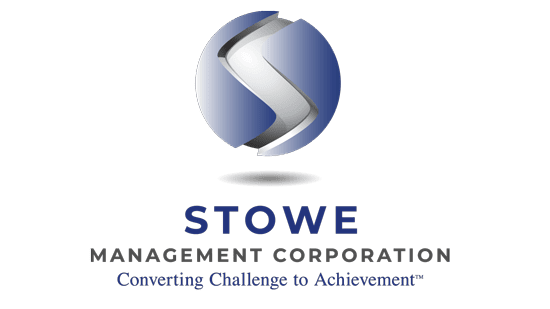3-Major things to consider when Succession Planning challenges arise.
First, consider this: Succession Planning is an interesting subject because it means a different thing for each of us in business. For the business itself, it can mean constant development of team members and those team members behind them to help assure that, as the business grows, there will be qualified people to assume growth needs. In addition, it helps assure that there is less negative impact if team members move on to other opportunities because there are trained people to step in to take up slack—people come and go as we try to keep the best, but that doesn’t mean it is the best place for them. We need to work at it all the time.

Team members today are more inclined not to take on more senior, long-term responsibilities and, instead, are more focused on career expansion focused more on dollars than professionalized growth. A more blatant example of another piece of the puzzle is the Great Resignation that is going on, where team members are leaving jobs in droves for any number of reasons—pay, workload, family, better horizons, just because, etc.
A third perspective is the senior management team, owner/managers and owners. Often, their perspective is going to revolve around a retirement program and/or a buy-out of some kind, inside or outside. The big question: Who is going to be there to run the store, so I/we get paid? From an ongoing perspective, management is also concerned that they have the right people for the right positions—the more people in the right jobs means a more successful, more profitable environment,
These are only 3 perspectives but each business, each employee or team member has their unique view of the Succession Planning process. It is clearly a community endeavor, not just a singular way of looking at “What’s in it for me?”
 Where do we start? Here are 3 major action areas that can put you on the road to understanding and course-correcting appropriate items in the Succession Planning arena.
Where do we start? Here are 3 major action areas that can put you on the road to understanding and course-correcting appropriate items in the Succession Planning arena.
- What do we need to understand? One of the first things to do is find out what is documented about succession and ownership and management transition. That means looking at ownership agreements, employment agreements, retirement programs, special arrangements like phantom stock. Next would be to review any documented or undocumented training and succession programs for now and in the future—try to paint a picture of what your team looks like now and what it potentially will look like 2 years, 5 years, 10 years down the road. Finally, interview or have dedicated conversations with senior talent and selected team members at each level of the organization. What do they believe the succession/transition process looks like? As business has grown and is growing, some special people achieve great things for which they are often told that they will receive ownership along the way for what they have contributed—Pay attention; this clearly needs to be discovered and addressed appropriately—How much was given away?
- Are you ownership-focused or business-focused? What does that mean? Is the business a means to an end for your return on investment? Does this mean, more than likely, it will be sold? Or does it mean that business comes first and all stakeholders, including family members, do understand that perspective as well? You might wonder how this can relate to the succession process. If you mean to sell it, then talent you find may not be as creative, assertive, entrepreneurial because they are never really going to reap benefits of running the business because someone else will be doing that. In the case of focus on business sustainability (with a sincere desire that the evolving team will assume responsibility and authority over an operation that they will eventually own), then you have a better chance of hiring and maintaining more business-oriented and entrepreneurial-focused team members because they know that there is no ceiling. No matter what the focus, it is essential to create a succession plan that works for all.
- What needs to be done to revive, resolve, rebuild a succession model that works for all? Remember: we are looking at first steps, as mentioned above. The third action item is designed around getting better acquainted with team members, your own goals and objectives, while addressing those items can be revitalized or updated over time.
Key areas to address:
Reconnect with those people that have been interviewed and begin to engage them about the business’ future, where they want to be and where you might see them. Set up a process where you get back with them on a regular, manageable time period.
- Begin to revise those outdated documents that have not been touched, sometimes for years. Start the process. One critical area would be employment agreements, which generally need to change. Ownership agreements may need a great deal of modification—for instance, the existing buy-out program may not be feasible. If something were to happen to the business or its owners, do those agreements in place actually deal with what needs to happen?
- Get with those people who may believe that they have more power or ownership to help craft something that will work for all.
- Evaluate your top 2 to 3 layers of management, including reviewing their job descriptions and comparing them to what they are actually doing and what they should be doing.
- With the team review completed, come to grips as to whether these team members are in the right positions. Should they have moved up the ladder years ago? Should they be running another department. Make the needed changes.

Sadly, succession does not often come to the surface naturally. It often requires some type of crisis to move it into action. Death of a senior team member, disability of a critical employee, change in revenue or growth (either up or down) and more can put the business into a whole new set of actions and challenges.
The big question:
Do you have in place procedures, operational protocols and a documented roadmap to handle what needs to be faced? Addressing these 3 action points should go a long way to helping you make a success out of what may happen, as opposed to an environment of constant challenge.
Bottom line:
All stakeholders see this arena in different ways and with their own perspectives, hopes, wishes. Getting everyone on the same page is imperative and can be challenging. Critically important for all!
Let’s start at step one. Good luck.
For additional information about the processes for Succession Planning, please see my article in California CPA magazine, July 2021, “Can’t Happen Here: The Power of Succession & Risk Management to the Rescue”: If we can be of service, please let us know.
Stowe Management invites you to participate in our Succession Planning Survey. The Multiple Choice Survey is estimated to take 3 minutes to complete and the results will be shared with all participants.

Subscribe to our Podcast!
Join our podcast live! Receive our Newsletter. Benefit from Mark H. Fowler’s progressive insights for your success, you can subscribe for free and receive Mark’s valuable experience in Business Consulting, Crisis Management, Managing Growth & Profitability, Mergers & Acquisitions, Succession Planning, Systems & Operational Analysis and more.
Over the years, I have worked with many good corporate citizens, who know that many lives depend on the way they do business. In the process, not only have these businesses and organizations been more successful, but we have all had fun along the way.” –Mark H. Fowler


 Where do we start? Here are 3 major action areas that can put you on the road to understanding and course-correcting appropriate items in the Succession Planning arena.
Where do we start? Here are 3 major action areas that can put you on the road to understanding and course-correcting appropriate items in the Succession Planning arena. Reconnect with those people that have been interviewed and begin to engage them about the business’ future, where they want to be and where you might see them. Set up a process where you get back with them on a regular, manageable time period.
Reconnect with those people that have been interviewed and begin to engage them about the business’ future, where they want to be and where you might see them. Set up a process where you get back with them on a regular, manageable time period.